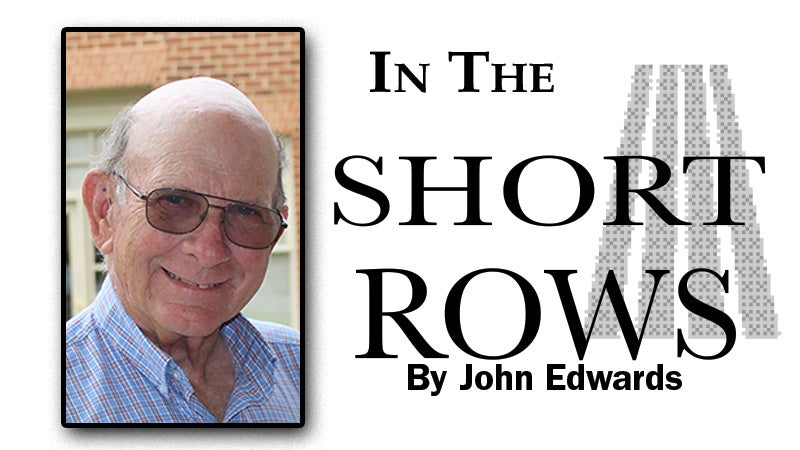Cherished treasure or just stuff
Published 10:33 pm Tuesday, March 3, 2020
 Cherished treasure or just stuff
Cherished treasure or just stuff
When is an object an heirloom, a memento or simply one more piece of stuff that we have to deal with?
From old photos to large framed portraits, from tiny bits of handmade lace to timeworn old pieces of silver, many of us have the remnants of past family history, much of it obscure and growing more so as the years go by.
This column was suggested recently by my nephew, Philip Edwards III, who is now living amid the not insubstantial collections that were better known to his father (my brother) and better still to our mother, who was among the keepers of a mostly oral family history.
Like Philip, Anne and I have been going through much the same process. The Smithfield Times became something of a home away from home. In fact, more time was spent there than at home. Cleaning out the offices brought boxes upon boxes of paintings, prints, books and mementos of travels, mostly through Virginia.
Bringing all this stuff home has further strained the storage limits of the already challenged capacity of our house, so sorting has been a somewhat painful, but necessary, activity in recent months.
That process has raised the questions first posed. What’s an heirloom, what’s a memento, and what’s just more stuff?
Start with photos. You can thank George Eastman for those shoeboxes full of old family photos on the closet shelf or under the bed. He introduced the Brownie camera in 1900. The Brownie and variations thereof made the preservation of family images possible. Long ago deceased grandparents, aunts and uncles were now not just names in the family Bible, but images.
“Johnny looks a lot like his great grandfather” was no longer a handed-down memory from grandmother, but a positive connection made possible by the magic of photography.
That said, the problem with old family photos, as we all know, is that they are often not labeled. I for one am notorious about failing to date and label photos. Professionally, I know better, and the thousands of Smithfield Times photos I show over four decades are generally grouped by date and most are identifiable through connection with the papers.
Not so with family photos I shot or many of those we have inherited. A couple of weeks ago, I found Anne sitting on the floor meticulously going through century-old photos that were much-cherished by her grandparents. A lot of the people in them simply cannot be identified today because there’s no one still alive who can do so. And at some point down the road, would anyone much care if they were identified?
Then, there are a great variety of family items that have been passed down. We have a silver serving spoon that my mother assured me — and I absolutely believed her — was passed from generation to generation of Hargraves and Bakers, dating back to the 1700s. The spoon is worn down from scraping the bottom of serving dishes on the tables of ancestors for well over two centuries, and it still finds its way onto Christmas and Easter dinner tables. But will it much longer?
There’s the “biscuit board” that was passed down through at least four generations. We rarely make biscuits from scratch anymore and the board generally rests idly on a kitchen counter, but a family heirloom it surely is.
And there’s the marlinspike, that iron splicing tool my father used when he was a boatswain’s mate on a coastal freighter, scratching out a living during the Great Depression nearly a century ago.
How does one deal with this dilemma? Items that go to a museum are catalogued, their provenance scrutinized and documented to the extent possible. What of family heirlooms? Will we leave them for the children and grandchildren to scratch their heads over before consigning many of them to a dumpster?
I know that we should take the time to document family history and write down that which might help future generations better understand something of their roots. It’s just that most of us don’t, and probably won’t.


